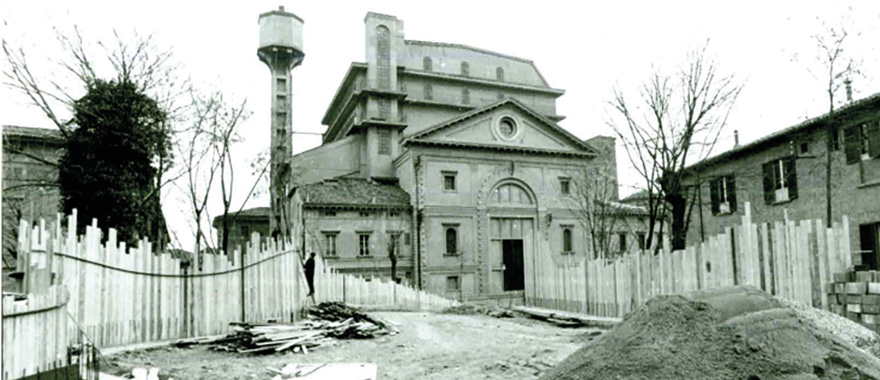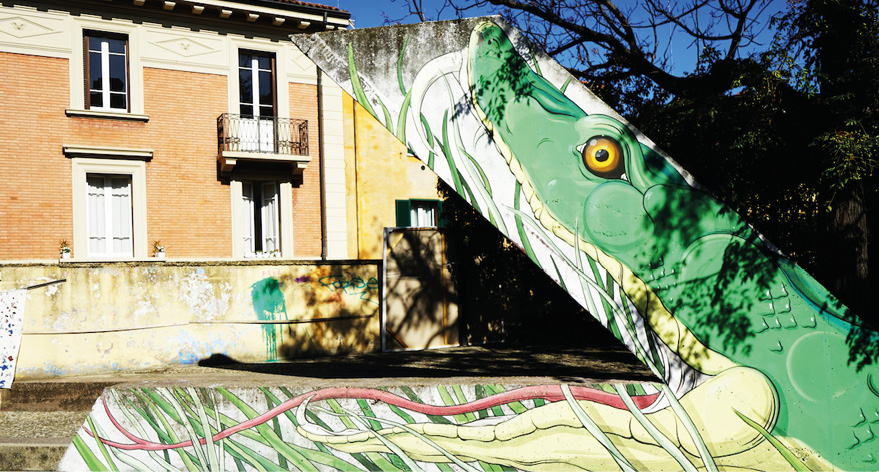Near the university area of Bologna, exactly behind the Teatro Comunale, hidden among the alleys and to the untrained eye, there is an oasis where greenery converges into an urban work, a space where children, students, and those seeking shelter for a few hours coexist in a unique architectural setting.
Those who know a little about the capital city of Emilia will know that green spaces within the centre are precious and coveted, and being able to enjoy them remains a privilege for few. To enter the Guasto, as it is called by its patrons, one has to climb a small hill, passing through what many call the “degradation” of the centre and which others believe it is instead the part that most characterizes it. The small rise comes from the debris accumulated from the rubble of the Palazzo Bentivoglio, which was left to go into decline around the 16th century. In the centre of the Garden still stands a marble fountain that drew from the springs on the hill of San Michele in Bosco.

During World War II, the hill was raised further to allow the construction of tunnels where the Bolognese protected themselves from bombing. It was not until the late 1960s that the Garden began to take the form we still know today, when the municipality decided to give it new life, contracting the task to architect Gennaro Filippini, who decided to transform it into a small garden terrace of contemporary art, inspired by Montessori principles. Not only that, the children who played in Largo Respighi became unwitting architects and consultants for Filippini, who actively involved them to create an area that combined creativity and education, opportunities for recreation and growth. The initial green area of 3,000 square metres was cemented over because children’s games would quickly destroy the lawn below. This is how it took the shape of small garden terrace of contemporary art. Unfortunately, the opening of ’75 saw the gates of the Garden close earlier than planned: student protests, resulting in the killing of Francesco Lorusso on March 11, 1977, defined the university area, including Guasto, as a dangerous and hostile zone, from then on, a shelter for those afflicted by the scourge of heroin rampant in Bologna in those years.
.

After two decades in oblivion, 1999 saw a renewed interest in the Garden aimed at redeveloping the area and making the green oasis once again accessible to most. Greenery becomes a central factor in this improvement work with the planting of the showy ginkgo biloba trees that run through the entrance; ’99 is also the year of the birth of the Guasto Garden Association, composed of individual citizens and families who through conventions still take care of the Garden today. Finally, 2006 saw the intervention of a student from the Academy of Fine Arts, who is now known as the street artist Blu, who was commissioned to embellish the previously constructed concrete works with murals representing the evolution of various species. The Guasto remains a place steeped in history for the people of Bologna, capable of interpreting the spirit of the times, today it is an unconscious bearer of principles such as sustainability and inclusion, social but also environmental, in which different realities coexist in a small space, where there always seems to be room for everyone.





.png)